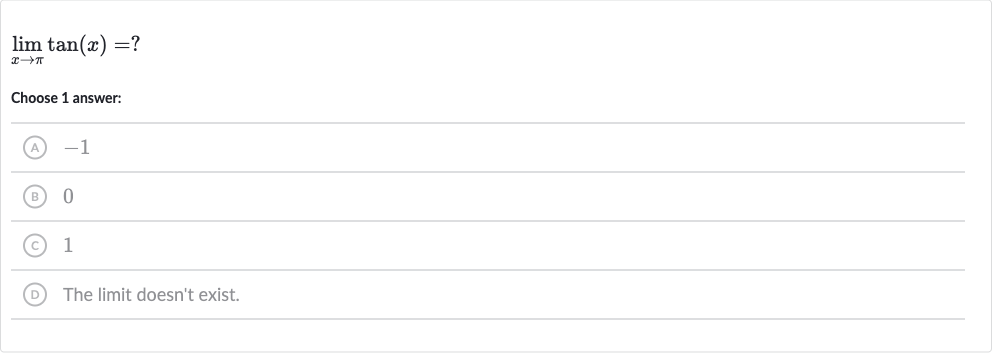Full solution
Q. Choose answer:(A) (B) (C) (D) The limit doesn't exist.
- Step : Evaluate tangent function near : To find the limit of as approaches , we need to evaluate the behavior of the tangent function near .
- Step : Definition of tangent function: The tangent function, , is the ratio of the sine function to the cosine function, so .
- Step : Behavior of as approaches : As approaches , approaches because .
- Step : Behavior of as approaches : As approaches , approaches because .
- Step : Limit of as approaches : Therefore, the limit of as approaches is the limit of as approaches , which is .
- Step : Final result: The limit of divided by any non-zero number is . Since we are dividing by , which is non-zero, the limit is .

